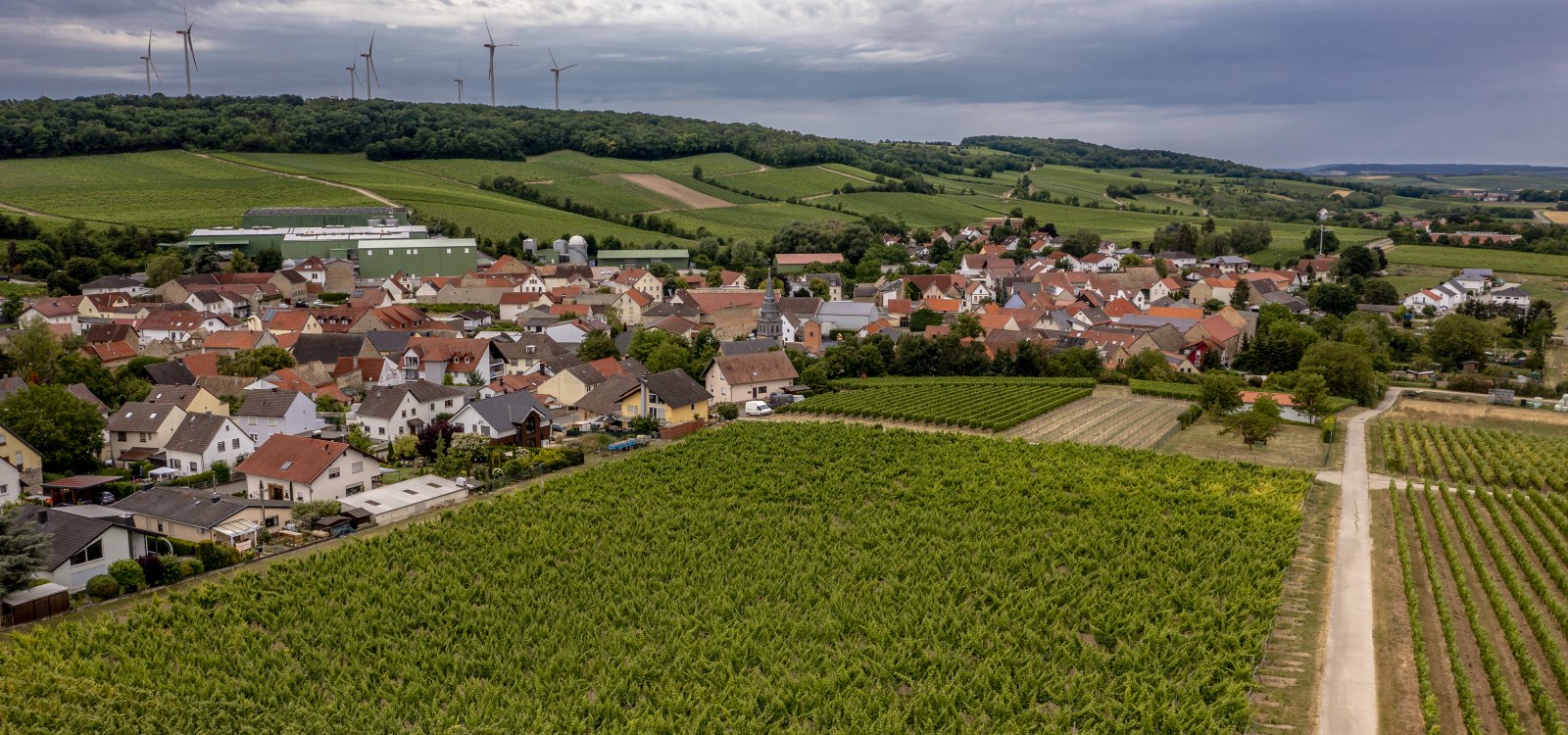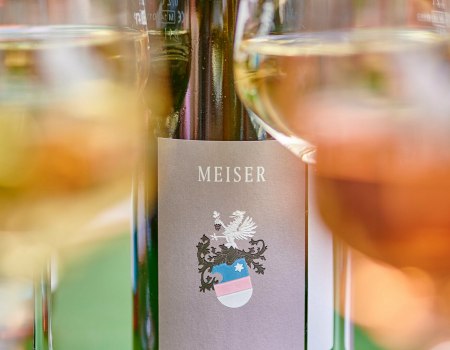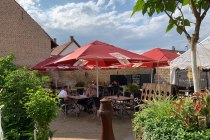Lonsheimer Mandelberg
Almond, mantle, marl
Such a beautiful name, so many questions: The simplest explanation could be that almond trees were found there. Nowadays, almond trees blossom without any problems in sunny Rheinhessen, but also in the Middle Ages? Another interpretation suggests that the vineyard bears the shape of an almond. Well, with a lot of imagination! Almond could also be derived from the Middle High German "Mantel". Not the garment, but meant the forest mantle, the edge zone of a forest. Pine trees are said to have grown there. Today, various vines thrive on clay marl, including special ones such as Cabernet Sauvignon, Cabernet Dorsa or Pinot Meunier. The Lonsheim lookout tower is not far away and belongs to one of the most beautiful Hiwwelt tours in Rheinhessen, the one in the "Aulheimer Tal".
> Discover Lonsheim via Hiwweltour Aulheimer Tal: https://www.rheinhessen.de/hiwweltouren/hiwweltour-aulheimer-tal
> Blog post about the hike on the Hiwweltour Aulheimer Tal: https://blog.rheinhessen.de/ein-wandertag-in-flonheim-und-auf-der-hiwweltour-aulheimer-tal/


















